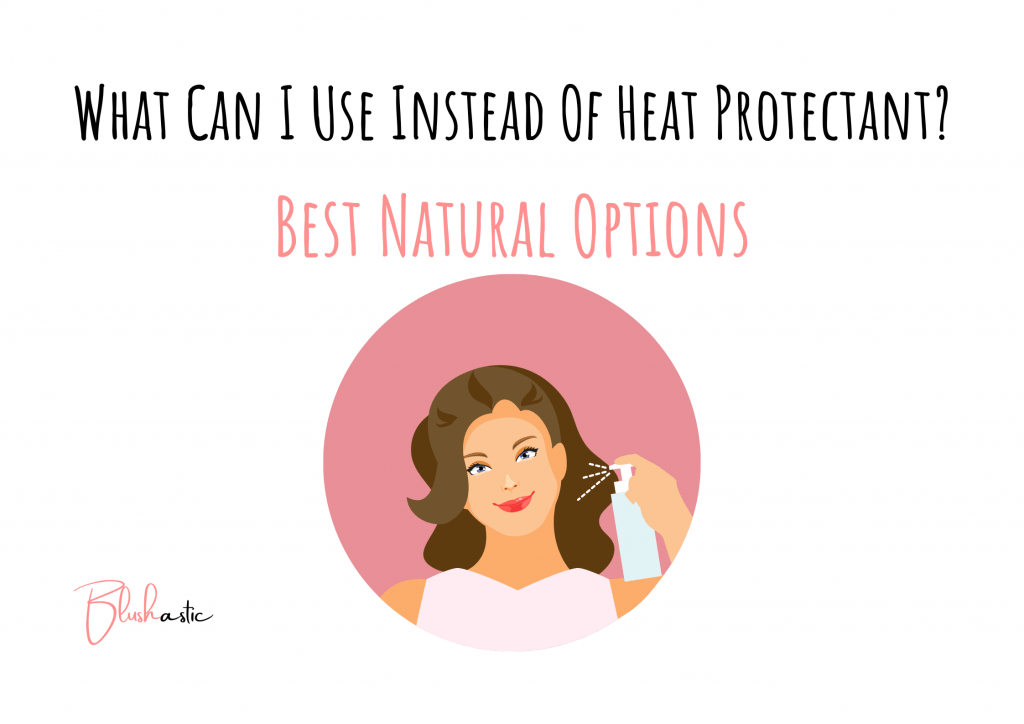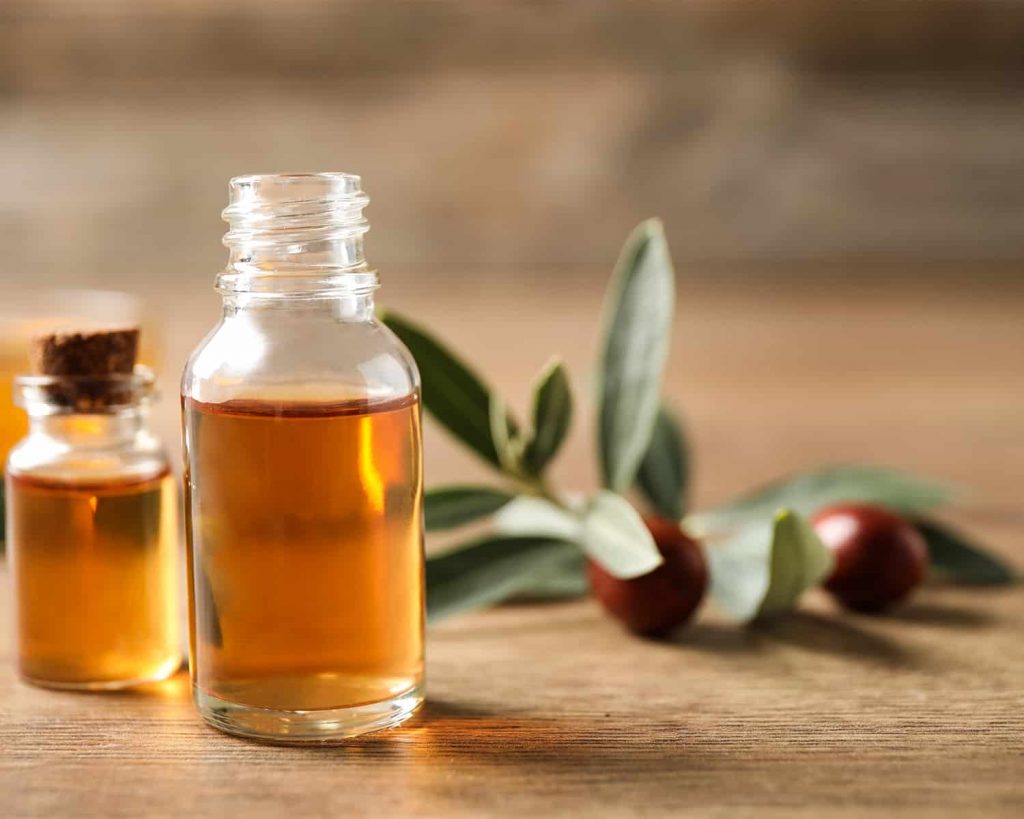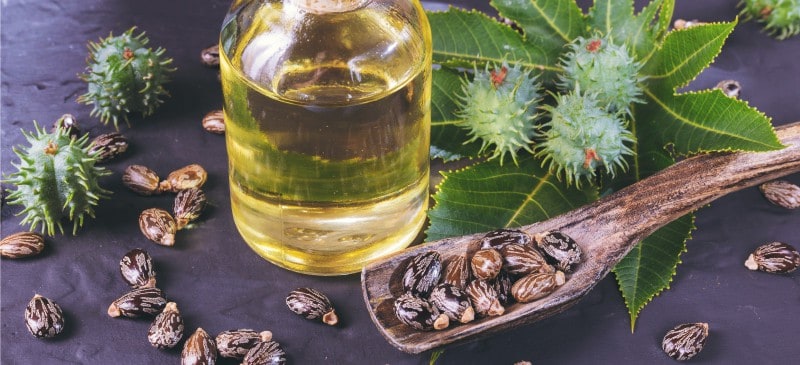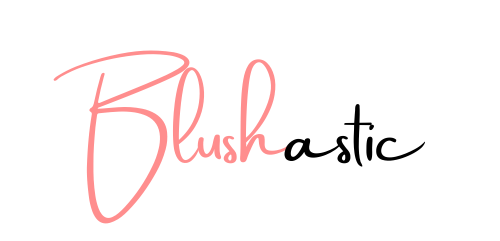When styling your hair with appliances like flat irons, curling irons, or blow dryers often, it’s essential to apply heat protectants to guard against breakage and damage brought on by high temperatures. As it turns out, you might already have what you require to safeguard your strands right before you. Experimenting with DIY protectants is a fun and affordable way to hydrate and strengthen your hair. However, doing your homework on ingredients and procedures is crucial to ensure they’re secure and suitable for your hair type.

In the following paragraphs, find out why switching to one of these inexpensive DIY heat-protection options has so many advantages over your current assortment of hair products. However, if you prefer natural alternatives to commercial products, this article also provides some effective and affordable options to protect your hair from heat. The answer to your question, “What can I use instead of heat protectant?” is here.
Contents
What Can I Use Instead Of Heat Protectant?
Any heat protector’s main objective is to lessen the amount of harm done by applied heat. Heat protectants create a barrier between the hair and the heat source, preventing the heat from penetrating the hair shaft and causing damage. Moreover, some heat protectants also contain ingredients that assist in hydrating and nourishing the hair.
Shea Butter
Shea butter is an incredible heat protectant against the frequent use of heat styling tools. Shea butter is a perfect substitute for the silicones present and is utilized in most heat protectants since it naturally conducts heat. The two silicones that are most frequently employed in heat protectants are Dimethicone and Cyclomethicone. Since silicone covers hair strands with a protective layer, heat from heat styling tools has difficulty penetrating and harming the hair. The inherent qualities of shea butter function likewise.

Shea Butter may be used to lock in moisture and shield the hair shaft from heat damage because it has a smoke point of 450°F (233°C). Without the buildup, the performance is akin to silicone. Furthermore, abundant in vitamins A and E, shea butter helps nourish and fortify hair, reducing breakage risk. It also contains anti-inflammatory qualities that help calm an inflamed scalp.
Argan Oil
Argan oil is made from the kernels of the argan tree and is a valuable source of fatty acids, vitamin E, and antioxidants. It has been used for many years in traditional medicine, and because of its moisturizing and nourishing qualities, it is currently a well-liked component in skincare and haircare products. The ability to shield hair from extreme heat is also fantastic, especially with flat irons that can reach temperatures of 360 degrees or more.
Argan oil, which is abundant in Omega-3, Omega-6, and vitamin E, not only shields hair from damage but also feeds it from the inside out. Argan oil has a smoke point of 420°F (216°C), which is higher than other natural oils’ smoke points of 300°F or below, so it may be used as a heat protectant without risk. Argan oil is a well-liked component in hair care products due to its famed capacity to control frizz and bring shine to hair. It is simple to apply and won’t weigh down hair because of its lightweight structure.
Coconut Oil
People have always raved about how coconut oil may enhance cognitive function, strengthen the immune system, and even help with weight reduction. It also functions naturally as a moisturizer for the skin and hair. Coconut oil is a popular natural heat protector for flat iron and hot tool users worldwide because of its high smoke point, moisturizing properties, and host of health advantages. For ladies with thin or fine hair, a smoke point of 350°F (177°C) is excellent since fine or thin hair should never be exposed to heat greater than this.

Also, the anti-microbial and anti-dandruff qualities of coconut oil are well established. Coconut oil will repair and safeguard the health of hair if using a flat iron regularly has caused it to feel dry and seem damaged. Alternatives to pricey hair treatments include coconut oil, which is both natural and inexpensive. Using sparingly is crucial because over-usage might cause hair to seem oily.
Avocado Oil
The avocado oil has perhaps the highest smoke point on the list, standing firm at 520°F (271°C), allowing for effortless application on all hair types and heat styling methods. It is a superb color-treated or greying hair protectant that is suitable for all hair types and textures.
Avocado oil helps to nourish, mend, and strengthen hair since it is high in antioxidants, biotin, minerals, vital fatty acids, and vitamins A, B-5, and E. Moreover, it supports a healthier scalp, produces shinier hair, penetrates hair deeper, and shields hair from the environment. Oleic acid and monounsaturated fats, which can enter the hair shaft and nourish hair, are also abundant in avocados. Moreover, the carotenoid antioxidants lutein and beta-carotene are potent antioxidants that protect the scalp and hair against pollution and UV ray damage.
Grape Seed Oil
A natural heat protector that is readily available everywhere is grape seed oil. It is appropriate for blow drying, curling irons, and flat irons at lower heat settings since it has a high smoke point of 390°F (199°C). All hair types can benefit from it, but thick and coarse hair benefits the most from it because of its unique qualities that aid with dandruff and eczema. As it contains antioxidants and Vitamin E, it also benefits your scalp.
The benefits of grapeseed oil include promoting hair development, hydrating, preventing split ends, decreasing dandruff, bolstering weak or brittle hair, and restoring luster. OPCs, flavonoids, linoleic acid, and vitamin E are included, all of which are crucial for the strength and health of hair. Because it is a deep hydrator, prevents hair loss, shields against UV ray damage, is exceptionally lightweight, and helps to soothe the scalp, grapeseed oil is a fantastic choice for over-processed and dry hair. OPCs are extremely effective antioxidants that can help prevent premature greying.
Jojoba Oil
With a smoke point of 383°F (195°C), jojoba oil may be used with flat irons, curling irons, and blow dryers at lower heat levels. It hydrates the scalp, guards against dryness, split ends, and breakage, fights dandruff, and lessens hair loss. As a result, it works well as a heat protectant while using equipment to straighten, curl, or treat the hair in any other way.

Jojoba oil is a multipurpose oil that may nourish hard-to-reach parts of curls, minimize frizz, hydrate hair from the inside out, and preserve the scalp’s natural balance. Its B vitamins, vitamins C and E, copper, and zinc content make it a natural advocate for strengthening hair, encouraging thickness and renewal, and helping to stop hair loss. The natural pH balance of the scalp may be restored with the aid of jojoba oil, which can also control oil production, promote hair growth, mend damage from heat and style, and provide a pleasant sheen. Also, it eliminates dirt and accumulation from our scalps, which helps to hydrate hair follicles and encourages healthy development.
Almond Oil
Thick and coarse-haired ladies can greatly benefit from Almond oil. It promotes strong, healthy, and attractive hair growth with a smoke point of 430°F (221°C) and a high vitamin content, including vitamins E, D, B1, B2, and A. It works well with most flat irons, curling irons, and blow dryers. It also offers a range of hydrating qualities that assist in safeguarding and restore the health of our hair. Almond oil can be used as a heat protector, but you should exercise caution if you have a nut allergy.
As almond oil is high in fatty acids and can help restore shine and manageability, it is a fantastic treatment for dull, dry hair. Moreover, it strengthens hair, smoothes texture, fights inflammatory scalp diseases, encourages hair development, and aids in preventing breakage. It also hydrates over-processed, dull, and dry hair. Moreover, it has vitamin B7, which can help grow and thicken thinning hair.
Sunflower Oil
With a high smoke point, sunflower oil is a great option for thicker, coarser textures. It can withstand the high temperatures of the majority of hot tools because of its smoke point of 450°F (233°C), which prevents burning. It is brimming with essential fatty acids, antioxidants, and vitamin E that may keep your hair strong and healthy.
For enhancing scalp health and accelerating hair development, sunflower oil is a fantastic natural oil. Vitamin E and other necessary nutrients are abundant in it, and it also lowers microorganisms that cause product buildup and dry scalp. Moreover, it lessens the incidence of alopecia areata, male and female pattern baldness, early hair loss, and thinning hair. The deep moisturizing qualities of sunflower oil make natural hair easier to handle and lessen the appearance of frizzy, unruly hair. It may be used alone, in combination with other scented or unscented essential oils, or as a daily scalp oil. It also functions as an effective solvent that reduces water loss.
Olive Oil
With a smoke point of 410°F (210°C) degrees Fahrenheit, olive oil is a cheap and natural alternative to heat protectants. Even if you have curly or thick hair, it is safe to use on all hair types and does an excellent job of hydrating and shielding hair from heat damage. Yet people with naturally oily scalps could find it a poor choice.
Fatty acids, lipids, and antioxidants are abundant in olive oil, It has the ability to permeate hair strands, and oils that can do this as opposed to merely covering them may be more efficient at minimizing swelling as hair absorbs water. Nevertheless, using olive oil straight to the scalp is not advised since it may promote Malassezia development, a fungus natural component of the scalp’s microflora. Dandruff or a tina versicolor can result from an overgrowth, and too many unsaturated fatty acids can bring on irritation and scaling.
Castor Oil
Castor oil may be used in flat irons, curling irons, and blow dryers at lower heat settings because of its Smoke Point of 392°F (201°C). Use it to semi-dry ends to guard against high-heat appliances and avoid frizzy results.

Castor oil is touted to be an excellent way to nourish the scalp and brittle hair follicles while promoting healthier, quicker hair development. Castor oil is a potent blend of proteins, vitamins, fatty acids, and antioxidants. No scientific evidence supports the claim that it can aid with hair loss. Moreover, it possesses antibacterial qualities that could help control bacterial or fungal overgrowth. Castor oil can be used to cleanse the skin, prevent breakage, and improve product absorption while being gentle and effective. Also, it may lessen scalp flaking and enhance blood flow to the scalp, promoting stronger hair growth.
How To Use Hair Protectant?
After you’ve identified the ideal oil to put on your hair to shield it from the damaging effects of a heat styling tool, you’ll need to decide how to apply it for the most outstanding results. Applying the oil evenly throughout your hair is crucial, emphasizing the ends where damage is most likely. Use the proper quantity of oil to prevent weighing down or making your hair appear oily. To style your hair, just adhere to these basic guidelines.
- Let your hair air dry until it is only a little damp.
- Pour out only 3-5 drops at a time, depending on your hair density.
- The hair just has to be gently coated.
- Working mostly on the midshaft and ends, brush this oil through damp hair.
- Let the heat protectant a few minutes to infiltrate your hair and perform its job.
- Following that, you may securely use your hot tool and style any way you choose.
Concerns Regarding Heat Protectant Alternatives
The smoke point, also known as the burning point in chemistry, refers to the temperature at which an oil starts to smoke, change color, and degrade, according to scientist Yolanda Anderson. Oils contain free radicals and acrolein, which raises cancer risk. Hence they should never be heated above their smoke points. A low molecular weight polymer that can permeate the skin and prevent heat from splitting the cuticles are two additional effective heat protectants that can help counteract the drying effects of heat.
They include glycerin or other moisturizers to lock in water. Oils alone, however, can produce drag and slow down the flat iron as it goes through your hair, thus causing additional harm. If we talk about chemical heat protectants, they are also harmful, but not entirely. But you have to make sure you use the right heat protectant. Now quantity also matters, so if you’re wondering how much heat protectant should I use, then you much go through their labels as some of them may contain harmful chemicals, and using a lot of them can cause hair damage.
Final Verdict
Your safety depends on avoiding smoke spots; your hair needs chemicals to fight moisture loss. Silicones like Cyclomethicone and dimethicone, which effectively coat the hair and produce a thin, water-repellent, heat-resistant layer, are present in many heat protection products. To provide you a healthier and safer heat protectant, numerous fantastic solutions are made with both natural and artificial chemicals.
While using oil, use caution and make sure to add a mild leave-in conditioner or moisturizer as well because pure oil alone may cause your hair to become dry and brittle. It is important to note that not all natural oils have the same heat-protecting properties, so it’s best to do some research before choosing one. We appreciate your visit.
Rebecca is a skilled writer with a passion for makeup and skincare. With years of experience in the beauty industry, she has a deep understanding of the latest trends and products and a talent for creating engaging content that resonates with her readers. Whether she’s writing about the latest skincare products or sharing her favorite makeup tips, Rebecca’s writing is always informative, entertaining, and inspiring.
